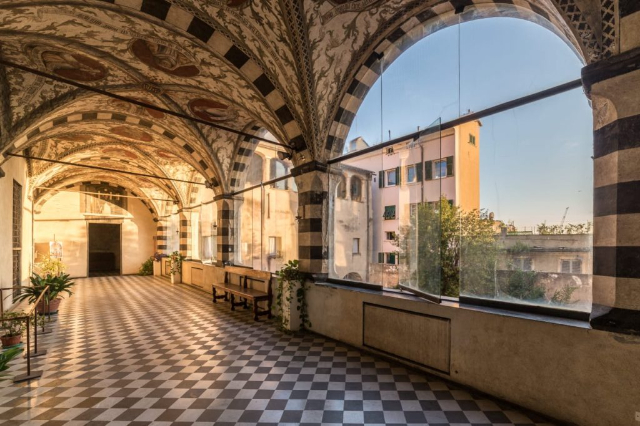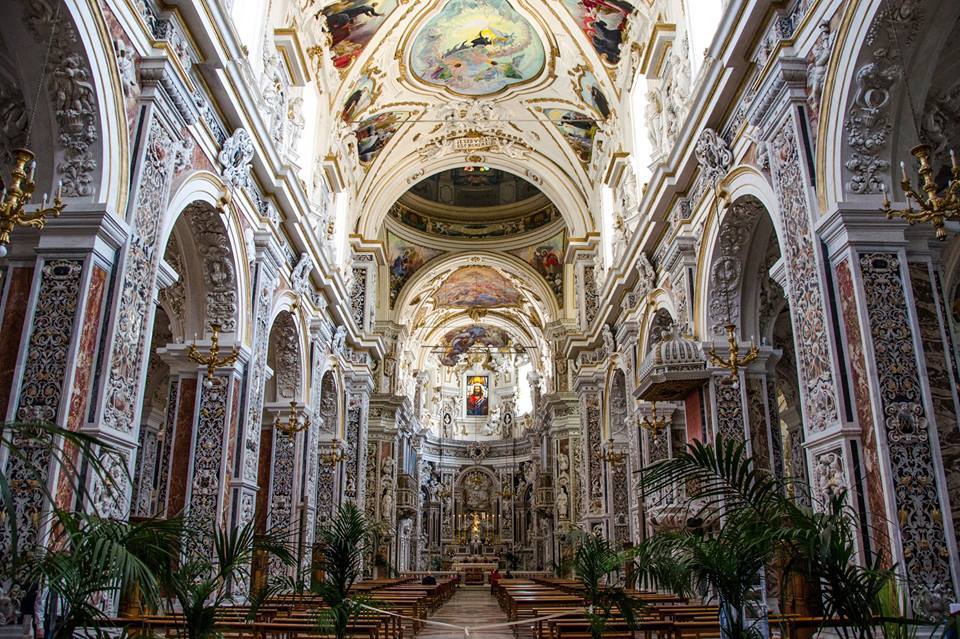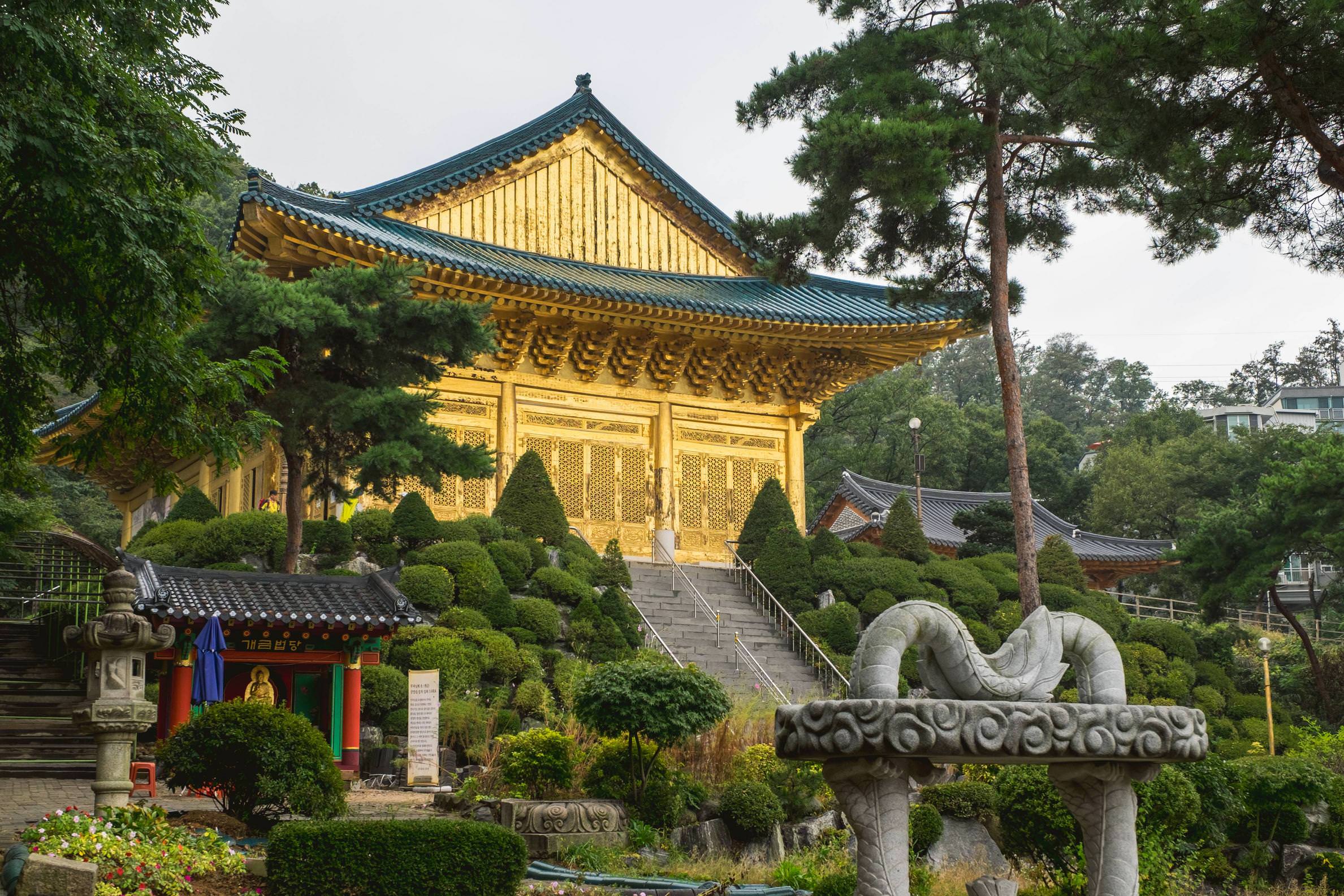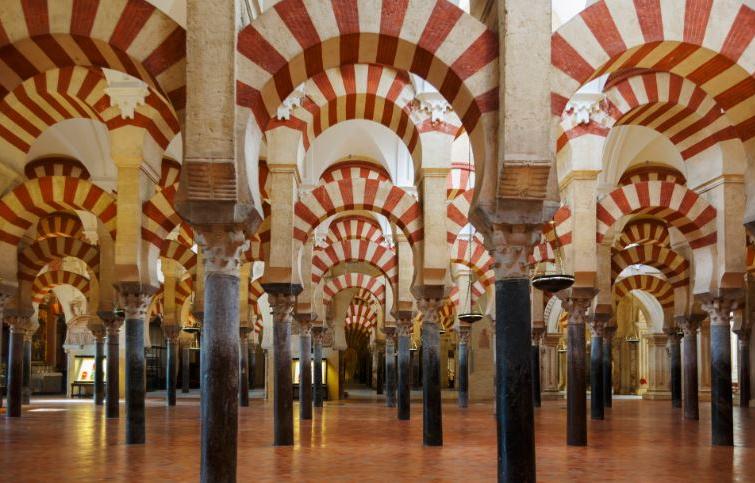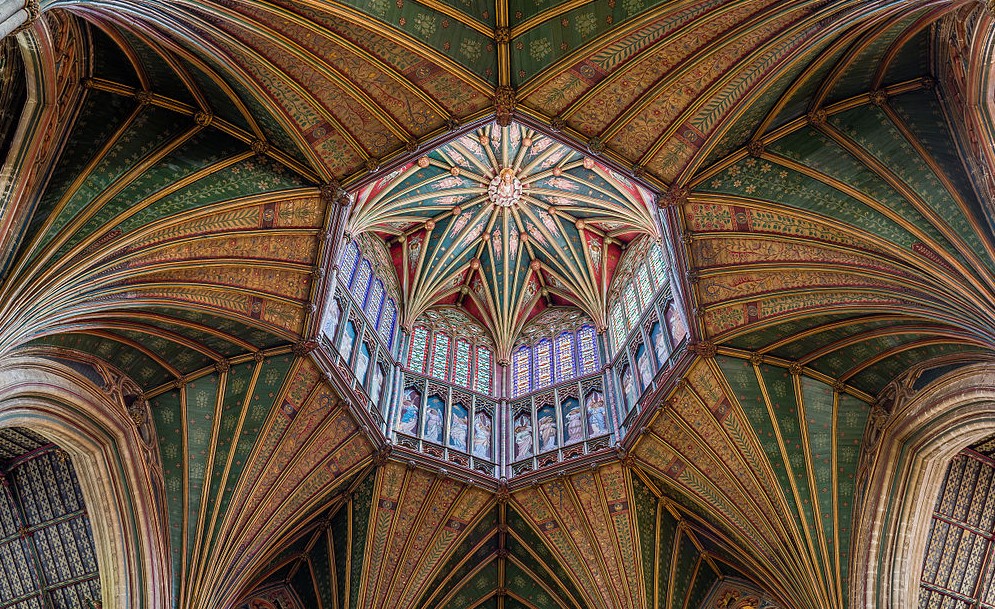The Basilica of Superga that rises on the top of a hill, from which it takes its name, is dedicated to the Madonna delle Grazie, whose wooden statue is preserved in the Chapel of the Vote.
On the hill, since 1461, well before the Basilica was built, there was a small church, parish for the faithful of the place. At that time the hill was "an acute mountain, and on the end of it a church with three altars situated in the same place where now there is the church of the Royal Congregation of Superga, but in a higher site", dedicated to the Madonna but also to S. Antonio and S. Grato. Conceived and realised by Filippo Juvarra in 1717-1731, it is dedicated to the Nativity of Mary and houses the tombs of the House of Savoy. According to tradition, it was erected by Vittorio Amedeo II to fulfil a vow made after his victory over the French in 1706. The choice of the place, visually connected to the royal palace of Rivoli, was to underline the royal dignity of the House of Savoy acquired after the Treaty of Utrecht (1713). The church, with a circular plan, is dominated by the 75-metre-high dome and flanked by two 60-metre-high bell towers. An imposing pronaos with eight Corinthian columns precedes the façade. Inside, the stucco decoration and the marble of the altars and the floor create spectacular light effects. The high altar, whose frame was designed by Filippo Juvarra, is enriched by a marble bas-relief by Bernardino Cametti that recalls the glorious battle for the liberation of Turin. Paintings and sculptures by Beaumont, Sebastiano Ricci, Carlo Antonio Tantardini, Bernardino Cametti and Agostino Cornacchini adorn the side chapels.
Inside the Chapel of the Vow, as already mentioned, there is the same wooden statue of the Madonna to which King Vittorio Amedeo II turned to pronounce his vow. The king’s coffin is in the Royal Crypt, which can be reached from the left of the basilica. In this same place, sumptuously decorated in baroque style, other members of the Savoy family traditionally rest.
The Basilica of Superga is also, sadly, famous for an event that struck the Turin football team in 1949. Against its wall, in fact, the airplane of the team of the Grande Torino collided that year, whose crew lost their lives in the impact.
The square outside the basilica offers a spectacular panoramic view of the whole city of Turin.



